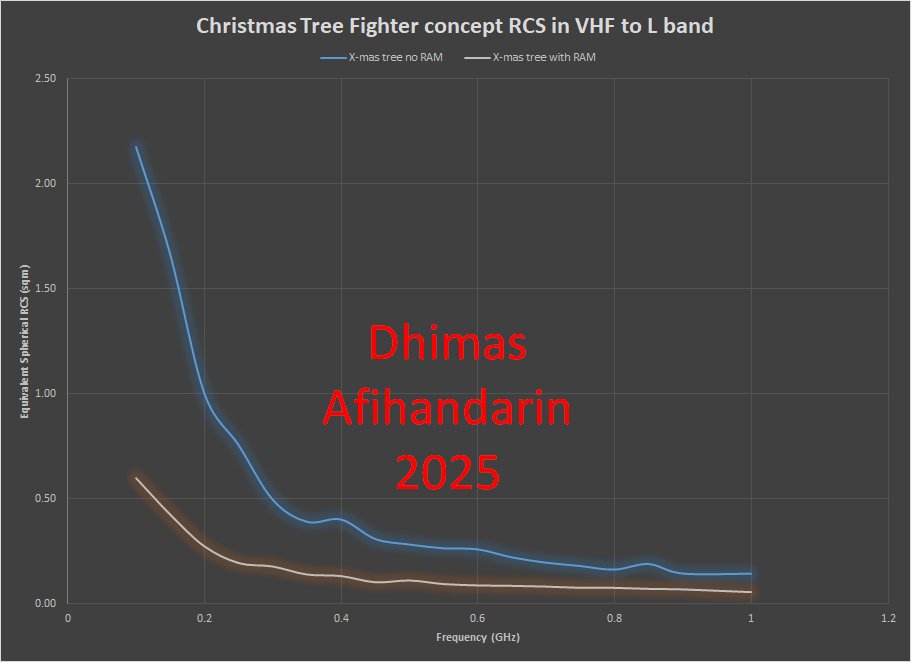So Russians using something like Shahed-136, which confirmed few days ago. There might be some other types of drones from Iran but might look it later or maybe if i can have a proper commission for them.
But right now Shaheed or Geran-2 comes first.
#shahed136
#Geran-2
But right now Shaheed or Geran-2 comes first.
#shahed136
#Geran-2

The model are based on available photos and dimension of the drone. Well would be nice if it can be carbon-copy accurate but perspective view just dont give me the option. 

The RCS modeling is as usual frontal section 60 by 60 degrees horizontal and 65-110 degrees (45 deg of arc) vertical. Propellers are omitted as well, propeller is likely made out of some form of fiberglass or wood, and those may have even smaller RCS than the drone.
For this modeling the Shahed model will be compared with conventional commercial Mugin/Skyeye Drone previously modeled. 

The modeling is done across 36 Frequencies spanning from VHF down to some 36 GHz. The following depicts interaction between the drones and the radiowave. it shows the "spikes"
The main differences apparently from the wing return/wing spikes. The untapered, straight wing of the Commercial drone, stands out, while for Shahed model the wing sweep "moved" the spikes at angle of about 45 degrees. modeling is at 10 GHz 

These spikes however are relatively narrow, despite their strength, making it actually hard to detect. Now onto Numbers.
As can be seen. the Shahed model have considerably low RCS in most frequencies modeled. Numerical table are provided for the Shahed model. 



This low RCS may make it bit hard to detect. The top end of Ukrainian SAM's the S-300PT/PS, using 5N63 Radar however may be able to detect it at 56 Km, however this distance shorten along with Horizon.
In addition it can be launched en-masse which could outnumber the 6 target channels available for S-300PT/PS. Or be set to fly slower than 125 km minimum detectable speed limit of the S-300PT/PS family.
Guess that's all for now. Hope it can be of some use, feedback are appreciated. and maybe a little bit of support could help me improve the quality of the modeling. One can use following link for support.
Thank you.
ko-fi.com/stealthflanker…
Thank you.
ko-fi.com/stealthflanker…
• • •
Missing some Tweet in this thread? You can try to
force a refresh
















